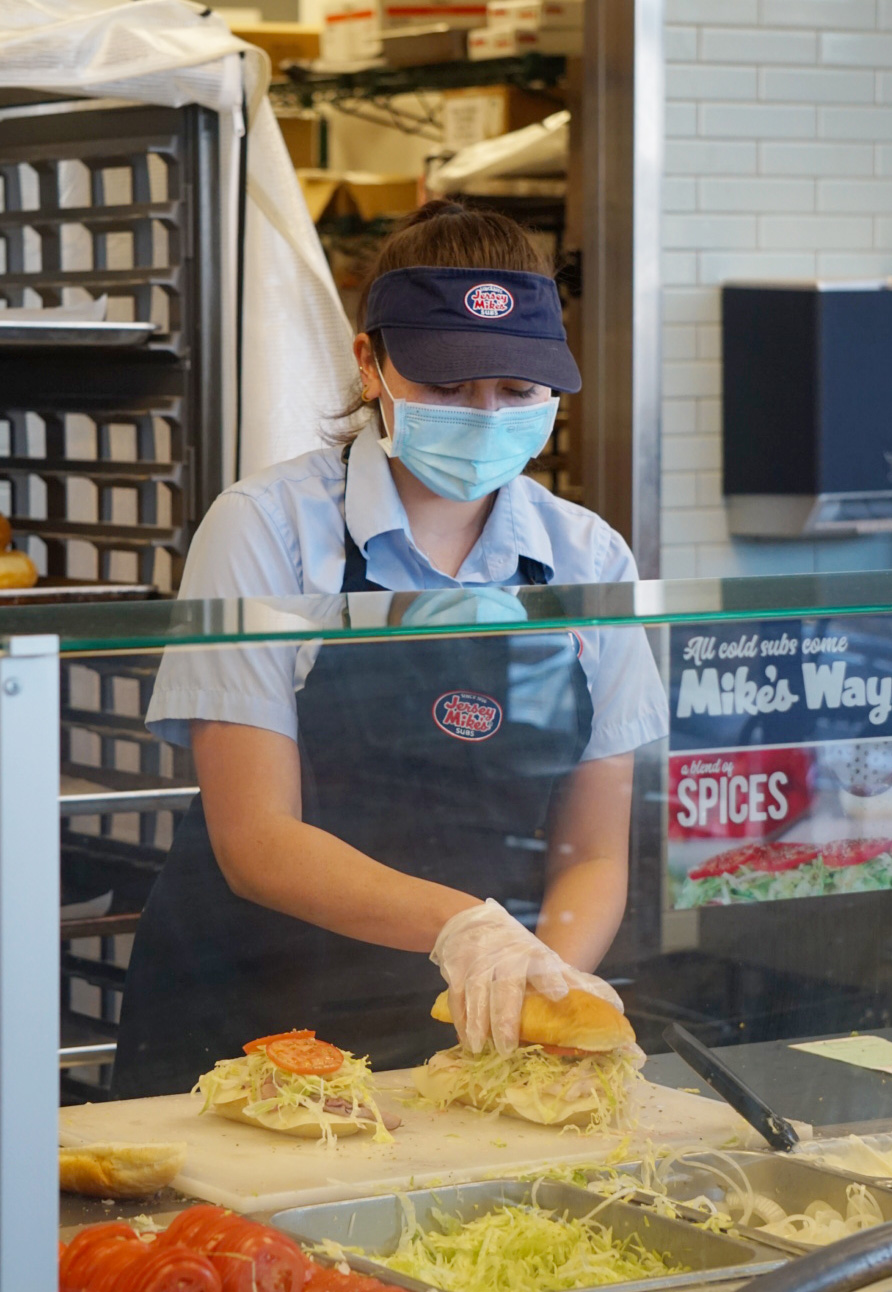Students grapple with understaffing at work
October 8, 2021

Casey Johnson (12) is always working.
Since the summer after her sophomore year, she has gone from the classic fair-food vendor, Chicken Charlie’s, to Rubio’s Coastal Grill, and now she works at a hair salon in Rancho Santa Fe from 1-5 p.m. on Tuesdays through Fridays, an arrangement that is made possible by her two-by-two class schedule.
“I think I love being busy,” Johnson said. “[Working is] kind of a time-filler.”
According to Johnson, as well as filling her time, having a job in highschool fills her wallet, which is helpful for her self-described “shopping addiction.”
“Making memories sometimes costs money. So having a job gave me that little bit of extra security,” Johnson said. “You also meet a lot of different people. Everyone should work in customer service, it benefits you so much.”
According to Johnson, her new job working at the hair salon is undoubtedly time-consuming, but a rewarding and refreshing change from her prior jobs in food service, as she gets to experience a new clientele and navigate a different set of tasks.
“Dealing with hangry people is another level of stress,” Johnson said. “Especially with COVID, a lot of dining areas closed down. So [when they] opened again, it was like [I was] having to put myself in five different places at once. A lot of [restaurants] were understaffed, so [it’s like] you’re working double.”
Short staffing during the pandemic has occurred nation-wide. According to the National Restaurant Association’s summary of data from the U.S Bureau of Labor Statistics, there has been a 12% drop in the quantity of food service workers from pre-pandemic times as of May 2021.
Lilah Nash (11), a former sandwich shop employee, experienced the understaffing phenomenon first-hand during her eight months of working.
Over the summer, Nash worked up to 35 hours per week, and even as school began, severe understaffing resulted in a limited pool of co-workers to help lighten the workload.
“[During the school year] they would want me to work every single day if I could,” Nash said. “They [were] flexible and understanding when I had school, but I was still booked four to five days a week.”
As job options are limited for young people entering the workforce, teenagers are often the ones to take the positions that businesses most desperately need to fill, resulting in long hours and inconvenient schedules. This problem was only exacerbated by the pandemic, as many potential employees realized that the wages that they would be earning in food service jobs were not much different than the money that they could collect from unemployment benefits, and the risk of working through the crisis was not worth the salary that it would provide.
“With the current working conditions, and the high amount of unemployment, I felt I was putting more time and energy into my job and then protecting my mental health,” Nash said.
According to Kate Taylor and Andy Kiersz of Business Insider, as of May 2021, most states—including California—offered more money in unemployment benefits than what would be earned in a minimum-wage job.
Having worked in the food industry for more than a year, Johnson said that having unreasonable expectations about working hours placed on her by her employer contributed to her quitting her job at Rubio’s, as she often worked ___ hours per week.
“Ultimately, the reason why I quit was because I was being overworked,” Johnson said. “I mean, a lot of people in food services are overworked for what they’re being paid. I loved it, and I loved the benefits I got from it: what I learned, the life experiences, the appreciation, the empathy… but never again.”
Johnson said that researching job opportunities is an important step to take before entering the workforce, as many young workers enter jobs that will overwork them, or simply won’t suit them, out of pressure to take the first opportunity that comes up.
“Make sure you enjoy what you’re signing up for, and you know what you’re signing up for,” Johnson said. “Look into management, because a lot of jobs that they hire you on the spot, [have] something’s wrong with management.”
Despite this less than ideal aspect of their work experiences, Johnson and Nash both took away valuable lessons from their time working in food service.
“I’ve heard a lot of people say ‘don’t get a job in high school’ [or] ‘just enjoy the rest of your [youth],’ but honestly, it kind of prepares you,” Johnson said. “You don’t have to have a stressful job if you don’t want it. You can set your hours. You can work with your friends. You can make it fun. I encourage everyone to work in customer service at least once at a young-ish age, just to have that experience.”
That said, both Johnson and Nash recognize that mental and emotional wellbeing should trump a feeling of commitment to the company or the employer.
According to Nash, it’s easy to feel trapped in a job when you know that there’s already a short staffing problem, but it’s okay to set boundaries and put yourself first.
“If you feel like it’s too much and you need to take a step back [it’s okay], because at the end of the day, the situation is nowhere near ideal,” Nash said. “People just need to be easier on themselves.”


